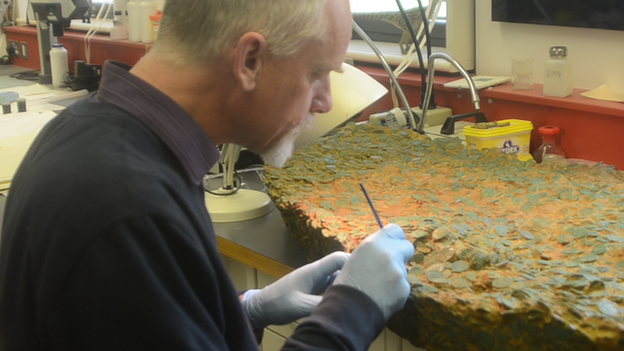Jersey hoard: Archaeologists unpick 70,000 coins
- Published
Jersey Museum conservator Neil Mahrer hopes to clear 400 coins per week
Work to separate 70,000 Celtic coins and pieces of jewellery is taking place under the public gaze at Jersey Museum.
Researchers aim to remove and clean up to 500 coins a week for the next three years in a specially built glass-walled lab.
The metal detector enthusiasts who made the find are now part of the team working on the project.
They unearthed the hoard, though to be the world's largest, in 2012 in a field in Grouville.
For the past two years the team, led by Jersey Heritage conservator Neil Mahrer, has been documenting the hoard, which is about 2,000 years old.
They expect to begin pulling it apart, one coin at a time, in a few days.
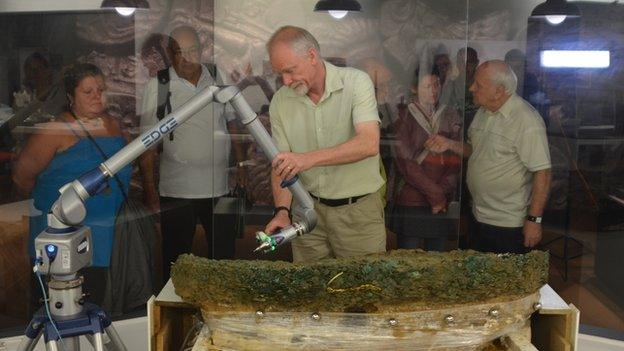
Neil Mahrer's team will spend three years cataloguing the hoard in a glass-walled lab in Jersey Museum
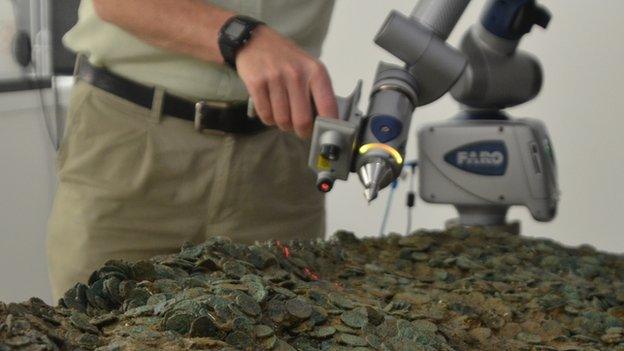
Neil Mahrer has been scanning the mud-logged coin hoard with a state-of-the-art laser
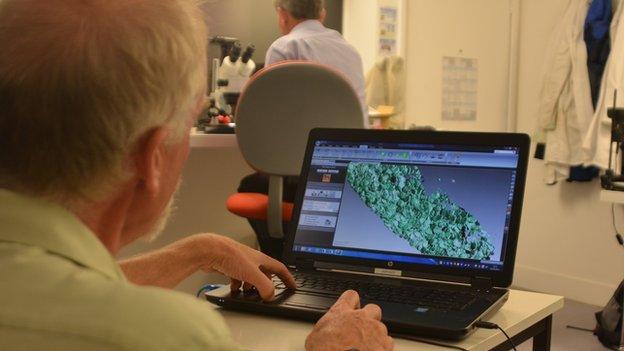
The laser scans allow Mr Mahrer to compose detailed surface imagery of the hoard
'We only get one shot'
Mr Mahrer has been using a £40,000 laser scanner to create detailed three-dimensional imagery of the find.
The laser is so precise it can pick out intricate patterns minted thousands of years ago.
Once scanned, the coins will be separated, dipped in formic acid, washed and meticulously cleaned by hand under a microscope.
"It's very important to us to have the best possible record of the hoard the way it was found before we start taking it apart, because we only get one shot at it," said Mr Mahrer.
"We still can't see inside the thing. We tried to find out about getting it x-rayed but it's just too big and too thick so all we can do is look at the surface.
"What will come out over the next three years will be a surprise to us all."
The team is already processing about 2,000 loose coins excavated with the main cluster.
Several examples of a rare coin weighing 0.5g are being found daily, adding to a known global catalogue "measured in the tens". Little is known about the tiny coin's origins.
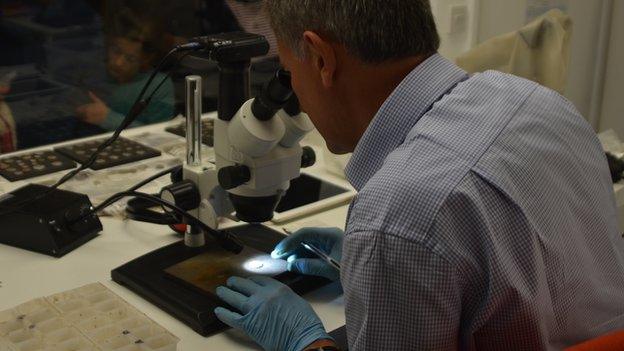
Richard Miles, pictured, discovered the hoard with Reg Mead and both are now part of the team cataloguing the find
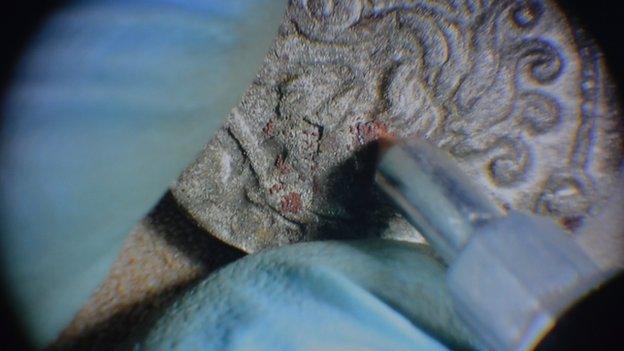
Researchers will microscopically clean and catalogue an estimated 70,000 coins and items of jewellery
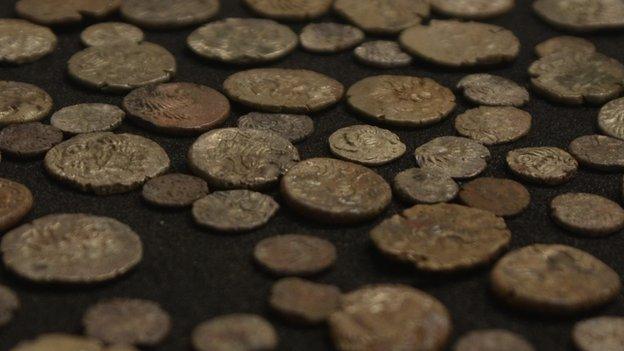
The coins will provide "years of work" for coin archaeologists around the world
Richard Miles worked in the States of Jersey Customs and Excise service when he and fellow enthusiast Reg Mead unearthed the hoard.
Both now work in the museum, helping catalogue the find and showing visitors around.
Mr Miles said the hoard will keep coin researchers around the world busy for years.
The pair's discovery was the culmination of a 30-year search.
"It's the story that's got people's interest," said Mr Miles.
"It's not just the treasure itself, but the fact that we've been searching for some time."
- Published21 August 2014

- Published21 June 2014
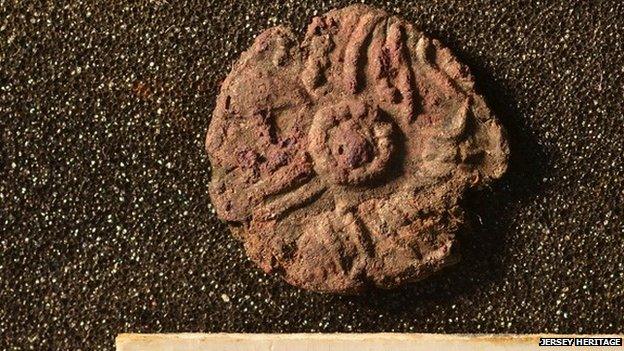
- Published10 May 2014
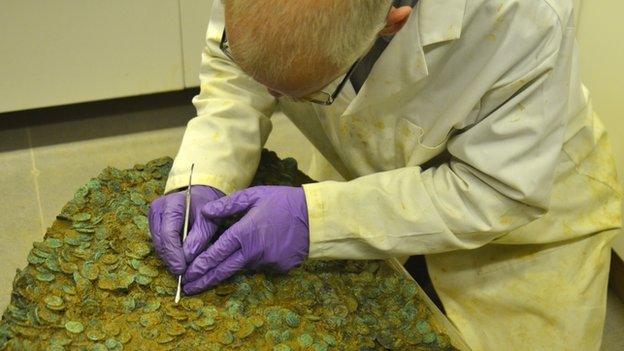
- Published27 November 2013
